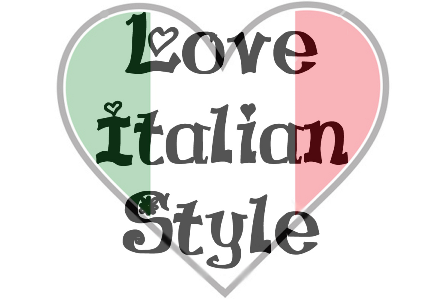
WTI Magazine #57 2015 April, 3
Author : Elda Buonanno Foley Translation by:
The poet and cultural critic Matthew Arnold stated "Have something to say and say it as clearly as you can. This is the only secret to style". Think about Italian style, the way we move and clothe ourselves, and you can understand why Italians are worldly famous for their demeanor and manners. We have always something to say and we say it clearly in the way we prepare ourselves and we face the world: no single wrinkle of any kind in our clothes is admissible or accepted.
So what is style for us? Why do we Italians always make such a big deal of our "appearance"? Is this related only to fashion? Do we need to wear extremely expensive brands to state something clearly? Or is it something else; something related to "la bella figura", the way people need to perceive us? I would propose that it is all the above. However, let me summarize a few points: Style is a matter of perception for Italians, a synonym of belonging and becoming, the way we communicate to the external world that we are and we mean.
Let me acronym the word style:
S is for sophisticated. You would recognize an Italian person in a colorful crowd for the way all the items in his/her person are set and combined together. A refined mixture of accessories needs to indicate care and attention for the preparation, and, for us Italians, this is not a matter of social pressure but, rather, an innate care for how we make a statement.
T is for tradition. Let's not forget that Italy is the country of the Renaissance, the golden period of flourishing visual and artistic arts, of inventiveness, creativity and richness. A period that has inaugurated a long lasting season of craftsmanship, accuracy, quality, attention for detail and the preciousness that makes the "Made in Italy" so worldly acclaimed and appreciated. The sense of aesthetics is our most visible flair and the one we treasure most in our public and private spheres.
Y as in you. Any Italian would be keenly aware of what other people might think or perceive just by looking at our clothes. We are the "business card" of ourselves so, according to our philosophy of living, the book needs to be appreciated, firstly, by its cover.
L as in Leonardo Da Vinci who in the XV Century wrote "Our knowledge is based on perception". Maybe that is the key to understand the Italian style: the perception of the self and the perception of the role of the self in the bigger community of the human being.
E as in extension. The way we clothe, we move, we eat is an extension of our personality. We have an innate sense of decency and harmony that comes with the genes. You would never see an Italian woman wearing sneakers while going to work: she would prefer to have callus on her feet than to wear shoes that are only "admissible" in the gym. Having said that, there is nothing wrong in wearing comfortable shoes: Italian women do wear them, but it is the "where" and the "how" that makes the difference.
In sum, style is a big deal for Italians and one reason we are so identifiable in public: to be noted, that we, the Italians, do not seek what the Ancient Greeks would indicate as kalokagathìa, the sublime idea of perfection as a combination of good and beautiful. What we are and we do is to manifest a sense of harmony and a continuous research for balance and appropriateness that is envied all over the world, unsuccessfully copied and relentlessly pursued. La Classe non è acqua.
Bibliography
Linda Ray Pratt, Matthew Arnold Revisited, (New York: Twayne Publishers, 2000) ISBN 0-8057-1698-X
Simona Cremante (2005). Leonardo da Vinci: Artist, Scientist, Inventor. Giunti. ISBN 88-09-03891-6.



